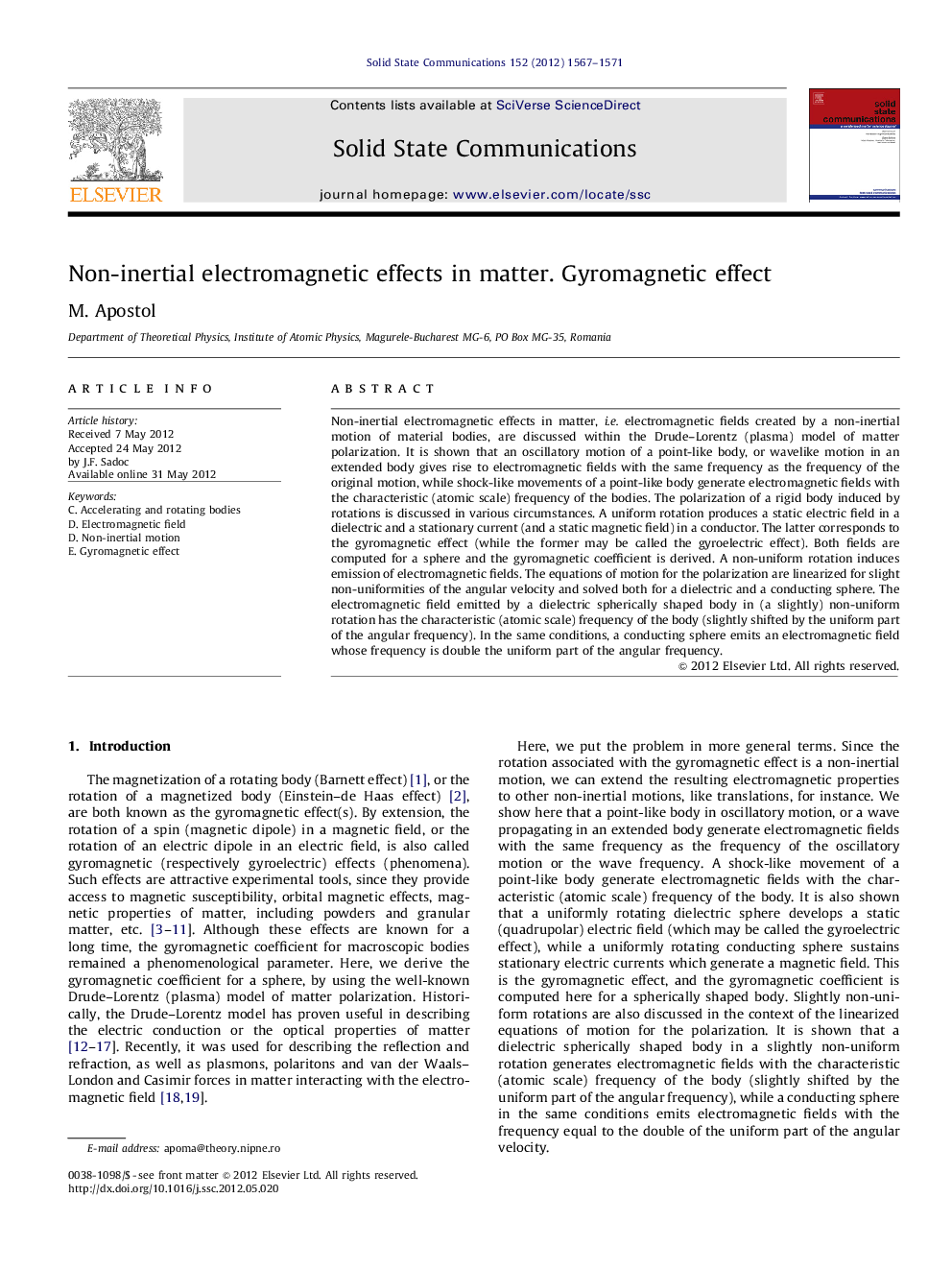| Article ID | Journal | Published Year | Pages | File Type |
|---|---|---|---|---|
| 1592651 | Solid State Communications | 2012 | 5 Pages |
Non-inertial electromagnetic effects in matter, i.e. electromagnetic fields created by a non-inertial motion of material bodies, are discussed within the Drude–Lorentz (plasma) model of matter polarization. It is shown that an oscillatory motion of a point-like body, or wavelike motion in an extended body gives rise to electromagnetic fields with the same frequency as the frequency of the original motion, while shock-like movements of a point-like body generate electromagnetic fields with the characteristic (atomic scale) frequency of the bodies. The polarization of a rigid body induced by rotations is discussed in various circumstances. A uniform rotation produces a static electric field in a dielectric and a stationary current (and a static magnetic field) in a conductor. The latter corresponds to the gyromagnetic effect (while the former may be called the gyroelectric effect). Both fields are computed for a sphere and the gyromagnetic coefficient is derived. A non-uniform rotation induces emission of electromagnetic fields. The equations of motion for the polarization are linearized for slight non-uniformities of the angular velocity and solved both for a dielectric and a conducting sphere. The electromagnetic field emitted by a dielectric spherically shaped body in (a slightly) non-uniform rotation has the characteristic (atomic scale) frequency of the body (slightly shifted by the uniform part of the angular frequency). In the same conditions, a conducting sphere emits an electromagnetic field whose frequency is double the uniform part of the angular frequency.
► Non-inertial electromagnetic effects in matter. ► Oscillatory motion, or wavelike motion, shock-like movements of a point-like body. ► Polarization of a rigid body induced by rotations. ► Uniform rotation, gyromagnetic effect and “gyroelectric” effect. ► Non-uniform rotation induced emission of electromagnetic fields.
